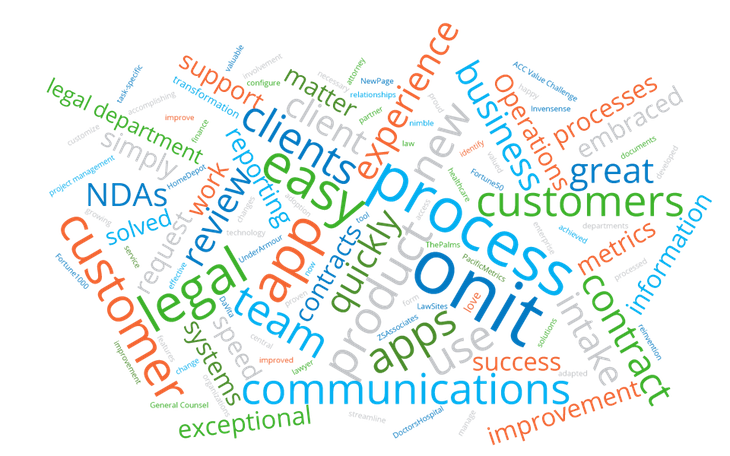Across your business, whether in sales, legal, marketing or vendor management, contracts help protect your company, define relationships and solidify business deals; contracts are the lifeblood of your organization. The sheer number of contracts the average Fortune 2000 company depends on is staggering; tens of thousands of active contracts at any given time. In addition to active contracts, your business also deals with tens of thousands of archived or defunct contracts. Further complicating the contract management predicament is that contract needs vary across business units. Contracts for legal and vendor management are concerned with compliance, for example, while a sales contract defines a specific set of deliverables or products to expedite a sale. Knowing these complicating factors, why do so many organizations employ ad hoc processes for a vital activity such as contract lifecycle management?
Or rather, maybe our question should be…how do top performing companies handle this seemingly endless cycle of contract management? There are many well-documented best practices for contract management in circulation, but one thing these proven techniques have in common is that they exist as part of a measurable, repeatable and visible sales contract management process. What exactly is sales contract management? It is a technology-enabled process by which a selling organization is able to create, store, manage, revise, and track progress around formal business contracts.1
According to Aberdeen Group, top performing sales organizations are 116% more likely to create a formal process to streamline sales contract workflow.2 We’ve seen it time and time again, across many different business activities such as legal matter and spend management, budgeting, or CRM; formal processes enable business units to increase their overall productivity. Here at Onit, we’re not surprised that contract review and approval processes are a major factor in these top performing companies meeting sales quotas and increasing their sales productivity and long-term client value. When Aberdeen Group evaluated key sales KPIs for organizations with and without sales contract management processes, they found that the average sales cycle among companies with a contract management process in place, was a month faster than lower-performing companies without contract management process.3
Sales contract management practices for top performing companies have these five traits:
Fully technology-enabled
Top performing companies usually have one thing in common; they utilize technology to enable their end-to-end sales contract process – from creation to fulfillment. Along the lifecycle, these companies employ e-signature capabilities to keep everything moving along in the digital workspace and a central repository for finalized contracts.
Collaborative
Account management is collaborative by nature. Top performing companies make use of technology-enabled management tools to help foster engagement amongst the sales team and between account managers and clients or prospects. The ability to allocate tasks and define roles and responsibilities in a digital workspace facilitates a more productive and efficient (and enjoyable!) workflow for the people involved. Another healthy side-effect of contract management workflow technology is that it reduces the non-collaborative, time-wasting, administrative tasks account managers must do, leaving them more time to devote to nurturing long-term client relationships. Learn more about adding engagement to your workflows
Transparent
In an optimal sales contract workflow, transparency is paramount. Each sales team member can view where his/her contracts are in the workflow, and what the next steps are to completion. Visibility into the lifecycle increases the ability of the sales team to build a track record of solid communication, an essential component of any long-term business relationship. In addition, a transparent process holds sales team members, managers, and invested parties accountable for their responsibilities within the workflow. With all of the stages of the process being conducted in a digital workspace, the time it takes to finalize contracts decreases. In fact, one Onit client saw a reduction of the time it took to complete contracts, from an average of 16 days down to around 24 hours!
Scalable
A top-functioning sales contract process has standard language and pricing models to fit the bulk of contracts the team will need, thereby creating time and space for legal and management to prioritize resources around the atypical, more complex contracts. The formal, measurable process around standard contracts increases the speed at which your sales team can close potential business. Utilizing a standard contract structure also helps build a solid foundation that can scale alongside the business and the sales organization to fit their evolving needs.
Data-driven
Having real-time contract workflow data into how the process is working and where the process is lacking or affecting the business negatively, enables top performing companies to allocate their people and monetary resources more efficiently. Analyzing the accessible data around your sales contract process also helps to foster an environment of continual improvement.
Could your sales process benefit from more engagement and collaboration? Onit Apps can help you bring transparency, efficiency, and collaboration to your sales contract management workflow. Contact us, or schedule a demo today!
Learn how to standardize and optimize workflows throughout your sales organization with our new whitepaper: Achieving Measurable Success in Account Management.
1. “Reducing Friction in the Sales Cycle: Best Practices in Sales Contract Management,” October, 2013. Aberdeen Group
2. “Getting it Right the First Time: Better Sales Contracting for Busy B2B Sales Operations Leaders,” February, 2015. Aberdeen Group
3. “Reducing Friction in the Sales Cycle: Best Practices in Sales Contract Management,” October, 2013. Aberdeen Group







